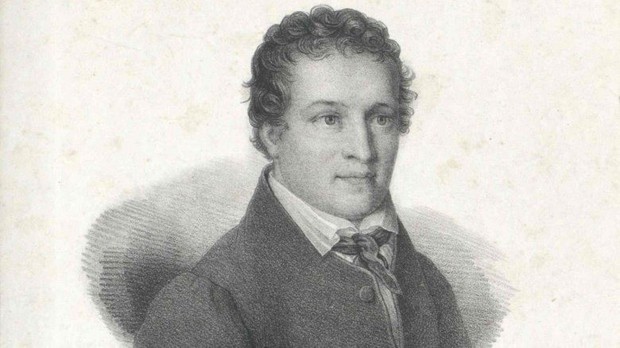The cool stuff you see on TV is often based on incredible crazy stories, even so absurd that even though it pulls the “feather paint” out of the truth, it’s too hard to accept. It’s just television, is reality any different?
Surprisingly, not only movies, but reality also contains a block of stories, which just makes you want to drag their “author” to scold a match to seduce others to believe in strange things. Sadly, you should believe it, because they are all true!
1. The story of a man named Kaspar Hauser

If a life story is worth turning into a TV show on Netflix, it’s Kaspar Hauser’s story.
It is recorded in the history books that Hauser was found wandering around a district of Nuremberg on May 26, 1828. Strangely, the man knew almost nothing other than his own name, Kaspar Hauser. Later, as people were constantly curious about this stranger’s appearance, he said he was locked in a dark room by people he had never seen. This partly explains the fact that Hauser doesn’t know how to behave and likes to eat bread and drink water.
Things got stranger and stranger when over the next few years he was murdered at least three times. No one has seen the culprit, and Hauser is said to be alone when these attacks occur. In 1833 he finally died in such a mysterious attack.
Various theories are being made about who he is and what really happened. These assumptions range from the fraudster to having mental and emotional issues due to child abuse. A stranger theory is that this is someone who is likely to succeed the throne but who is not yet legal and someone wants to eradicate it… Anyway, we probably never know which one. is the truth.
2. Identity of the man wearing an iron mask
You may have heard of Iron Mask Man. The story you remember was probably written in the 19th century by author Alexandre Dumas. But even though the work is fiction, the story is actually real.
According to the Times Literary Supplement, this man is in fact as mysterious as the character in the Dumas stories. It is said that Bénigne de Saint-Mars was one of the guards under the king. As Saint-Mars goes from prison to prison, a mysterious prisoner of an unknown identity is still with him. This person wears a mask (supposed to be iron or velvet, according to various documents) whenever he appears.
This strange man died in the Bastille prison in 1703, and the name Marchioli is written on the obituary. No one believes the name and attempts to determine the identity of this prisoner include more than 50 different abilities, from being a 12-year-old who dared to hit the crown prince to being his own son. , King Charles II. We still don’t know who this person really is, but the lewd words are gradually getting weirder.
3.Reason must not accept sweets from strangers
You’ve probably heard that you shouldn’t accept candy from strangers. So did you know that, according to The Shelf of the Harvard Library Collections blog, the above statement came from a real kidnapping that has not been resolved so far – the kidnapping of Charley Ross.
The story was published in 1876 in “The Story of Charley Ross’ Father”, written by Walter Lewis Ross. In June 1874, a man in a horse-drawn carriage was distributing candy to children in the Germantown area of Philadelphia. On July 1, Charley went missing. According to the boy’s brother, Walter, “Charley is in the car”. As Walter continued the story, he revealed that Charley’s kidnappers were using candy to seduce children, and when they said they would take them to the store to buy firecrackers (it’s still 1874 after all). Children do not hesitate to follow them.
In 2013, a librarian accidentally discovered what the Smithsonian Institution identifies as the first ransom sent to America, also the Charley Ross. The kidnappers demanded $ 20,000 (around $ 400,000 today) in exchange for a four-year-old baby. Over the next five months, the Charley family received 23 letters from kidnappers and investigated over 600 other children with illnesses like Charley. The boy is still nowhere to be found.
4. Who is Circleville’s writer?
It really is classic blackmail: there is a mysterious entity that seems to know everything about you. This happened in Circleville, Ohio, and no one knew the person behind the secret letters that started appearing in 1976.
Gizmodo reviews what we know about Circleville’s Mystery Writer – the things that keep our curtains closed every night. A series of anonymous letters began with a letter denouncing a woman named Mary Gillispie who had had a relationship with the school’s market supervisor. Her husband, Ron, also received several letters informing him of the relationship. They went to ask friends and family, the letters suddenly stopped … but still couldn’t find out who wrote the charges.
On August 17, 1977, Ron received a phone call that drove him mad, picked up a gun and left his home. He died that day. Ron crashed into a tree. What is confusing is that the weapon exploded. No one knows who called, what they said to each other, or what caused Ron’s death.
Mary’s brother-in-law Paul Freshour was ultimately arrested for the whole case, but the handwriting test and other evidence was inconclusive. Despite this, Freshour was found guilty and sentenced to 10 years in prison. Also during his stay in prison he received a strange letter to him. He confirmed his innocence until his death in 2012 – and no one still knows the truth about the origin of the letters or how the writer knew so many secrets.
5 the two murders of Mary Ashford and Barbara Forrest
Birmingham Mail has published a duet of Weird Stories 150 years apart, all set at Pype Hayes Park in Birmingham, England. On the evening of May 27, 1817, Mary Ashfold, 20, left a dance pub and returned home around midnight. A few hours later, a man was on his way to work through the park and saw the body of the girl. Shortly after, police arrested Abraham Thornton, 25, who was believed to have been with her before her murder. He defended his innocence and was acquitted, then left this city to start a new life.
In 1974, 20-year-old Barbara Forrest was found dead on her way home from May Bank Holiday with her boyfriend. His body was found on June 4, also at Pype Hayes Park (just 500 meters from his home – over 450 meters). The two cases have some strange similarities. Barbara was also last seen on May 27, with both women celebrating the same holiday (Pentecost Monday – Pentecost). Abraham Thornton is the suspect for the previous case, Michael Thornton is the suspect for the second case. Like Abraham, Michael was acquitted. The two cases have not received a response.





